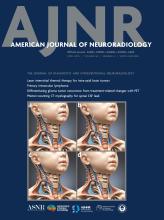This article requires a subscription to view the full text. If you have a subscription you may use the login form below to view the article. Access to this article can also be purchased.
Graphical Abstract
Abstract
BACKGROUND: It is often difficult to identify treatment-related changes (TRC) from tumor progression (TP) in patients with glioma, and the current application of PET scanning is expected to improve the diagnosis.
PURPOSE: We used a systematic review and meta-analysis to reveal diagnostically more promising tracers by comparing the diagnostic accuracy of different PET tracers in identifying TRC and TP in patients with glioma.
DATA SOURCES: We searched PubMed, Web of Science, and EMBASE databases, and we selected studies that used PET scans to identify TP and TRC in patients with glioma.
STUDY SELECTION: Twenty-eight studies were identified based on the set criteria. The studies involved a total of 10 different tracers and 1405 patients. TP occurred in 67.4% (947) of patients, while TRC occurred in 32.6% (458) of patients.
DATA ANALYSIS: The sensitivity, specificity, diagnostic odds ratio, positive likelihood ratio, and negative likelihood ratio of various PET tracers were calculated and summarized. Moreover, the diagnostic value of various tracers was compared.
DATA SYNTHESIS: This systematic review included 28 studies comparing 10 different PET tracers, including 18F-fluoro-deoxy-glucose FDG (18F-FDG), 11C methionine (11C -MET), 18F-fuoroethyl-L-tyrosine (18F-FET), 3,4-dihydroxy-6-18F-fluoro-L-phenylalanine (18F-FDOPA), 18F-fluorothymidine (18F-FLT), 18F-PSMA-1007, 68Ga-PSMA-11, 18F-choline (18F-CHO), 18F-fluciclovine, and [11]C-Alpha-Methyl-Tryptophan(11C-AMT). The results revealed that 11C-MET exhibited the highest diagnostic value, with an overall sensitivity and specificity of 0.89 [0.85, 0.93] and 0.91 [0.84, 0.99], respectively. Although the number of 18F-FDOPA studies is limited, it exhibited high diagnostic value, with an overall sensitivity and specificity of 1.00 [0.91, 1.00] and 0.92 [0.75, 0.99], respectively.
LIMITATIONS: Most studies consisted of small sample sizes; however, the included studies differed to some extent regarding the reference standard for the final diagnosis and the standard of care. Additionally, most selected studies were retrospective.
CONCLUSIONS: Amino acid-based tracers exhibited the highest diagnostic value in identifying TRC and TP in gliomas, with 11C-MET and 18F-FDOPA having the most notable advantages. Research on other new tracers is limited, therefore, further studies are needed to prove their diagnostic value.
ABBREVIATIONS:
- 11C-AMT
- [11]C-Alpha-Methyl-Tryptophan
- 11C-MET
- 11C-methionine
- 18F-CHO
- 18F-choline
- 18F-FDOPA
- 3,4-dihydroxy-6-18F-fluoro-L-phenylalanine
- 18F-FET
- 18F-fuoroethyl-L-tyrosine
- 18F-FLT
- 18F-fluorothymidine
- 18F-PSMA-1007
- 18F-prostate-specific membrane antigen-1007
- DOR
- diagnostic odds ratio
- NLR
- negative likelihood ratio
- PLR
- positive likelihood ratio
- PSMA
- prostate-specific membrane antigen
- PSP
- pseudoprogression
- RANO
- Response Assessment in Neuro-Oncology
- RN
- radiation necrosis
- SROC AUC
- Summary Receiver Operating Characteristic Area Under the Curve
- TP
- tumor progression
- TRC
- treatment-related changes
- © 2025 by American Journal of Neuroradiology













